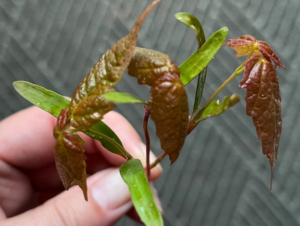Managing Maple Seedling in Connecticut
About Managing Maple Seedling in Connecticut
Maple Tree Seedlings
Springtime in Connecticut brings forth a spectacle of nature’s renewal. However, this year, residents across the state are witnessing an unexpected phenomenon – a widespread invasion of maple tree seedlings sprouting up across lawns, gardens, and sidewalks. From Greenwich to Hartford, the tiny saplings are popping up everywhere!
Maple trees are native to Connecticut and play a vital role in the state’s ecology. They provide shade, habitat for wildlife, and contribute to the picturesque autumn foliage that attracts visitors from far and wide. However, the current surge in seedlings suggests a unique convergence of environmental factors.
One likely explanation is the phenomenon known as “mast seeding.” Maple trees, like many other plant species, exhibit mast seeding behavior, where they produce an unusually large crop of seeds in certain years. This phenomenon, influenced by factors such as weather patterns and nutrient availability, results in synchronized germination and the subsequent spread of seedlings.
Connecticut’s recent weather patterns may have provided the perfect conditions for mast seeding to occur. Mild winters followed by ample spring rainfall create favorable conditions for maple trees to produce an abundance of seeds. Additionally, changes in land use and urbanization may have inadvertently created more suitable habitats for maple seedlings to thrive.
While the sight of maple seedlings carpeting lawns may seem harmless, it could have implications for both homeowners and the environment. Left unchecked, these seedlings may compete with existing vegetation for resources, potentially impacting the diversity of plant species in local ecosystems. Moreover, as the seedlings mature into trees, they could pose challenges for homeowners in terms of landscaping and property maintenance.
However, there are steps that residents can take to manage the influx of maple seedlings responsibly. Regular mowing can help control their spread across lawns, while transplanting seedlings to more suitable locations, such as wooded areas or community green spaces, can ensure their continued growth without disrupting urban landscapes.

Getting Rid of Maple Seedlings
- Hand Pulling: For small areas with a manageable number of seedlings, hand pulling can be an effective method of removal. Simply grasp the seedling near the base and gently pull it out of the ground, being careful to remove as much of the root system as possible to prevent regrowth.
- Mowing: Regular mowing can help keep maple seedlings in check by preventing them from establishing deep root systems and spreading across your lawn. Set your mower blade to a height that allows your grass to thrive while minimizing the growth of seedlings.
- Herbicides: Selective herbicides formulated specifically for broadleaf weeds can be effective at controlling maple seedlings without harming your grass. Be sure to follow the manufacturer’s instructions carefully and apply herbicides when weather conditions are favorable for maximum effectiveness or call a professional.
- Mulching: Applying a layer of organic mulch, such as wood chips or shredded bark, around trees and in garden beds can help suppress the growth of maple seedlings and other weeds by blocking sunlight and conserving soil moisture.
- Transplanting: Instead of disposing of maple seedlings, consider transplanting them to more suitable locations, such as wooded areas or community green spaces. This not only helps reduce waste but also promotes the growth of native trees and enhances biodiversity.
